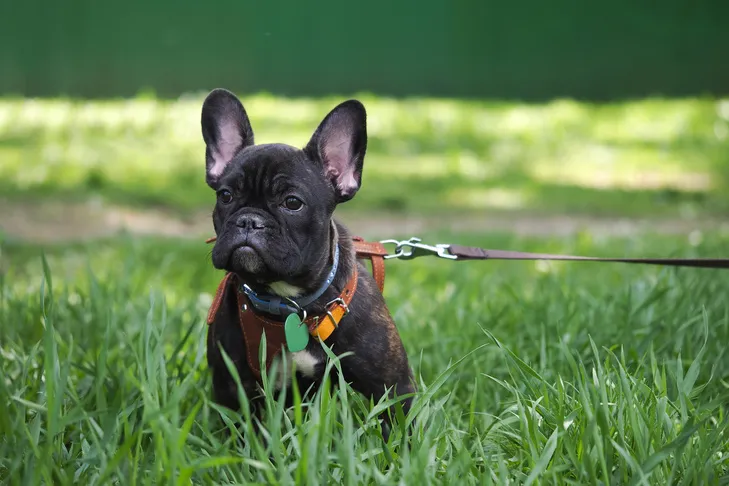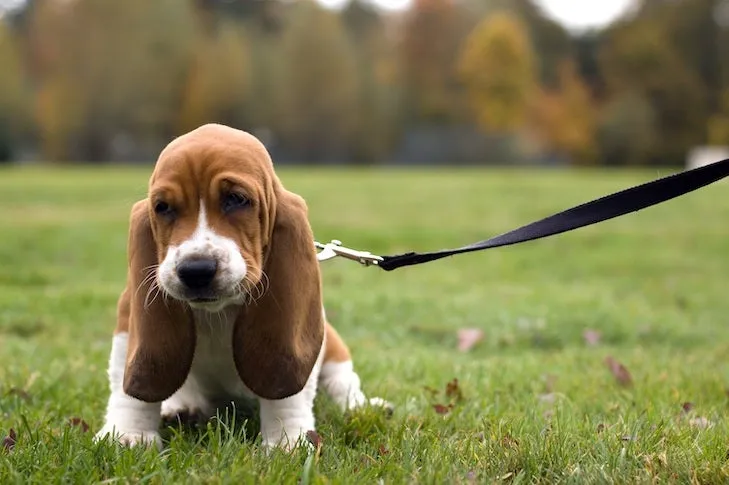Many new puppy owners assume that polite leash walking is an innate skill for dogs. However, this crucial ability is something that must be taught through consistent training and positive reinforcement. Establishing good leash manners early on is not only important for your puppy’s safety but also ensures enjoyable walks for both of you throughout their life. This guide will walk you through the optimal time to begin, step-by-step training methods, and common challenges you might encounter. Understanding When Should I Train My Puppy On A Leash is the first step towards a well-behaved walking companion.
The Optimal Time to Start Leash Training Your Puppy
The best time to start introducing your puppy to a leash is as early as possible, typically around 8 to 10 weeks of age. At this stage, puppies are highly impressionable and eager to learn, making it an ideal window to create positive associations with their collar, harness, and leash. Early training focuses on making these items a natural part of their routine, rather than a source of stress or anxiety. Remember, these initial sessions are about comfort and positive exposure, not immediately embarking on long walks.
Laying the Foundation: Step-by-Step Leash Training
Building a solid foundation for leash training involves several progressive steps, starting in a controlled environment and gradually moving to more stimulating surroundings.
Introduction to Collar, Harness, and Leash
Begin by letting your puppy get accustomed to wearing a collar or a lightweight harness, and then attaching a leash. Allow them to wear these items for short periods inside the house while you’re playing with them or offering treats. The goal is for your puppy to associate collar and leash time with positive experiences, such as food, fun, and attention. This helps them view their gear as something pleasant, not restrictive.
Teaching a Reliable “Come” Cue
Before tackling walks, teach your puppy a sound cue that means “food is coming” or “come to me.” This could be a clicker, a verbal word like “yes,” or a tongue cluck. In a quiet, distraction-free area, with your puppy on their collar and leash, make the sound. The instant your puppy looks at or turns towards you, reward them with a small treat. After several repetitions, your puppy will not only look at you but also start coming towards you for the reward. Consistency is key here.
Make Your Puppy Come To You
While your puppy is still wearing their leash and collar and heading your way after hearing the cue, take a few steps backward. Reward them enthusiastically when they reach you. Gradually increase the distance, so your puppy learns to follow you for several paces upon hearing the cue. Puppies have short attention spans, so keep training sessions brief and always end on a positive note, when they are still eager to participate, to prevent mental exhaustion.
 French bulldog puppy in a harness sitting in tall green grass on a leash for a walk.
French bulldog puppy in a harness sitting in tall green grass on a leash for a walk.
Practicing Indoor Leash Walks
Once your puppy reliably comes to you, practice walking a few steps together in a quiet room with minimal distractions. The sensation of the leash and collar will be enough of a challenge initially. Offer plenty of treats and praise as your puppy learns to walk alongside you on the leash. This controlled environment builds their confidence before facing the outside world.
Venturing Outdoors with Your Leash-Trained Puppy
Finally, you’re ready to test your puppy’s developing skills in the great outdoors. This step introduces new challenges as your puppy will encounter a myriad of intriguing sounds, smells, and sights. Be patient and keep these initial outdoor walks short. If you notice your puppy is about to lunge towards something or get distracted, use your established cue sound and move a few steps away, then reward them with a treat for following you. Maintaining constant vigilance and positive reinforcement is crucial during this phase.
 Basset Hound puppy sitting in the grass on lead.
Basset Hound puppy sitting in the grass on lead.
Common Leash Training Challenges and Solutions
Even with a solid foundation, you’re likely to encounter some common issues as your puppy grows, explores new places, and faces new distractions. Addressing these challenges effectively will help you achieve pleasant, loose-leash walks.
Dealing with a Pulling Puppy
If your dog starts pulling ahead or in a different direction, immediately turn yourself into “a tree.” Stand completely still and refuse to move forward until your dog relaxes the leash and returns to your side. Avoid yanking, jerking, or dragging your dog. For persistent pullers, alternative training tools such as front-hook harnesses or head halters can be very effective in redirecting their focus and preventing pulling. Understanding how do you stop a puppy pulling on the lead is essential for a harmonious walking experience.
Addressing Lunging Behavior
If your dog tends to lunge at other dogs, cars, or people while on a walk, proactive intervention is key. Try to redirect their attention with a treat before they have a chance to lunge. Increase the distance between your dog and the trigger whenever possible. Stay alert and anticipate potential distractions before they become too close. While this behavior might be more common in certain breeds, any dog can be startled or overstimulated.
Managing Excessive Barking on Walks
Some dogs develop a habit of barking excessively at other dogs or people during walks. Often, this behavior stems from insufficient mental and physical stimulation. Ensure your dog receives an appropriate amount of exercise and enrichment for their age and breed. If barking persists, use a similar redirection strategy as with lunging: create distance from the trigger and offer treats before they start barking. Over time, your dog will learn to turn their attention to you whenever they see another dog, associating calm behavior with rewards. Consistent reinforcement is vital for successful leash training and addressing these behavioral challenges.
Gradually, you’ll find yourself needing fewer treats and doing less troubleshooting during your walks. However, it’s always a good idea to keep some treats on hand for random reinforcement of good leash-walking behavior.
Conclusion
Teaching your puppy to walk politely on a leash is a journey that requires patience, consistency, and positive reinforcement. By starting early, introducing gear gradually, practicing in various environments, and proactively addressing common challenges like pulling, lunging, and barking, you can establish a strong foundation for enjoyable walks. Remember that every puppy learns at their own pace, so celebrate small victories and seek expert guidance if you encounter persistent difficulties. With dedication, your puppy will master leash manners, making every outing a positive experience for both of you.
